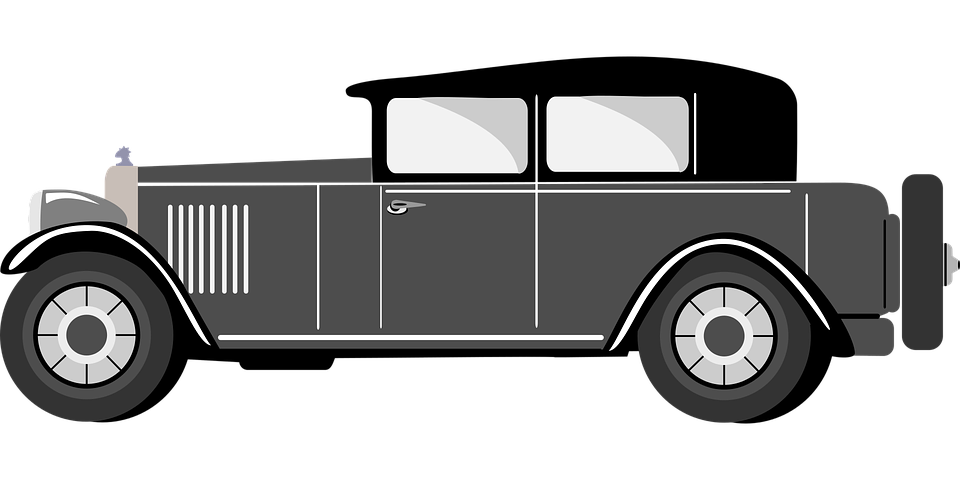


Mobile users:
For best results, view in Landscape mode.
Lincoln:
In May 1927, lack of demand for the Model T
forced Ford to shut down the assembly lines
on the iconic vehicle. Later that year, the
company introduced the more comfortable
and stylish Model A, a car whose sleeker look
resembled that of a Lincoln automobile.
In fact, the Model A was nicknamed
“the baby Lincoln.”
In 1917, Henry Leland, a founder of the Cadillac auto brand,
established the
venture after his hero, President Abraham Lincoln.
Facing financial difficulties, on February 4, 1922, the
Ford Motor Company purchased the failing luxury automaker
Lincoln Motor Company for $8 million.
In the 1930s, Ford’s Lincoln division introduced
its popular Zephyr model, which was inspired
by the Burlington Zephyr, a streamlined,
diesel-powered express train that debuted amid
great fanfare in 1934 and featured an engine
built by General Motors.
The Lincoln Continental launched in 1939 and was a flagship
model for decades.
Other leading Lincoln models over the years have included
the Town Car, a full-size luxury sedan released
in the 1980s, even though Henry Ford
had a custom-built vehicle called a
Town Car in the 1920s.
Mercury and Edsel:
In 1938, Mercury was created by Edsel Ford ( Henry Ford's son ).
Forming half of the Lincoln - Mercury Division,
the brand was intended to bridge the price gap between
the Ford and Lincoln vehicle lines.
Ford’s vision for Mercury included improved
power, ride, handling, stopping distance,
internal noise and enhanced styling.
To offer a medium price car under its own marque,
Edsel Ford began Mercury as a separate
company within Ford in 1937. Even though
it was used on the Chevrolet Mercury for
1933, the Mercury name was selected from
over 100 potential model and marque names.
The first model, the 1939 Mercury 8, sold for $916 and had a 95
horsepower V-8 engine.
More than 65,000 were built the first year.
The offerings included a two and four door sedan and a town
sedan.
When World War 2 ended in 1945, Mercury was coupled with
Lincoln, and the Lincoln - Mercury Division debuted.
In the 1950s, featured more styling and
features such as the first fixed sunroof on the 1954
Mercury Sun Valley, with a transparent Plexiglas top.
In 1957, Mercurys grew wider, longer, lower and more powerful
with what was called Dream Car Design.
Mercury had entered its heydays as a premium brand with models
like the Montclair, Monterey and Turnpike Cruiser.
In the late 1950s, the launch of the Edsel
brand would significantly affect both the
Lincoln and Mercury divisions.
For 1957, the entire Mercury product line was
redesigned, and for the first time since 1948,
Mercury vehicles no longer shared
a common body with Lincoln.
In 1957, Mercury introduced station wagons as a model line,
such as the Voyager and wood-grained Colony Park.
While Lincolns would shift to unibody
construction for 1958, the 1957 Mercury line shared the chassis
and underpinnings of the premium models of the upcoming
Edsel range.
In a marketing decision that would prove fatal to the future of
the Edsel brand, the pricing of the Edsel division overlapped
the Mercury division completely.
Edsel was developed, and manufactured by the Ford Motor
Company for model years 1958 - 1960.
In 1958, 63,110 Edsels were sold in the U.S.,
and 4,935 were sold in Canada.
In 1959, 44,891 Edsels were sold in the U.S.,
and 2,505 were sold in Canada.
And in 1960, Edsel's last, only 2,846 vehicles were produced.
Ford invested heavily in a yearlong campaign leading consumers
to believe that the Edsel was the car of the future.
After it was unveiled to the public, it was considered to
be unattractive, overpriced, and over-hyped.
The Edsel never gained popularity with contemporary American
car buyers and sold poorly.
The Ford Motor Company lost about $350 million on the
Edsel's development, manufacturing, and marketing.
In 1967, the Cougar was introduced, which was Mercury's version
of the Ford Mustang.
The 1970s Mercury saw the introduction
of the Grand Marquis, Mercury’s best-selling
nameplate. Mercury sales peaked in 1978 at
an all-time high of 580,000.
In 1975, several changes across the Mercury line.
The long running Monterey was discontinued, with the
Marquis becoming the sole model, and a new Grand Marquis
was put between the Marquis and Lincoln Continental.
Originally intended as the replacement for the Comet, the Monarch,
led to a completely new market segment:
the luxury compact car.
After the 1997 model year, the Cougar was discontinued as the personal
luxury market began to decline in demand.
In 2010, Ford announced the closure of the Mercury line by the
end of the year.
In terms of overall sales in North America, the Mercury brand held only
a 1 percent share, compared to the 16 percent share of Ford.
With under 95,000 vehicles per year sold for 2009, Mercury had sold
fewer vehicles than either Plymouth in 2000 or
Oldsmobile in 2004.
